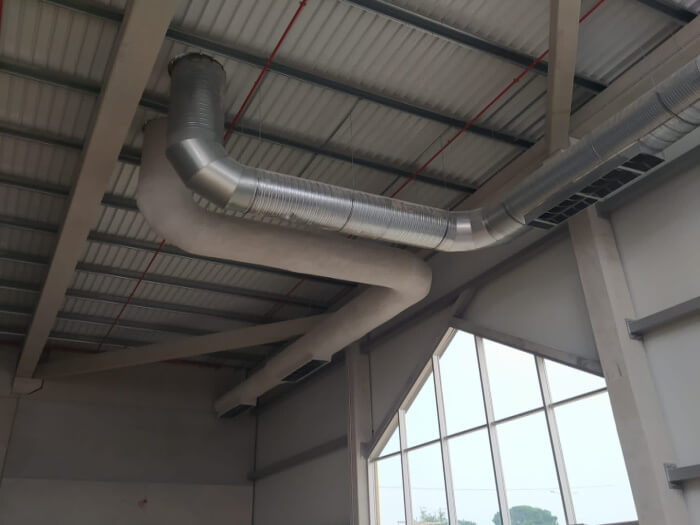ventilation ducts
In the event of a fire, the ventilation ducts ensure the supply of fresh air and the pressurisation of neighbouring rooms.
These ducts sometimes pass through the areas where the fire is active before reaching the protected areas.
It is therefore essential to ensure that ventilation ducts meet the following properties whether the fire is outside the duct (normal operation) or inside (in cases where the duct has been degraded):
• Fireproofing, so that the fire does not spread from one room to another
• Thermal insulation to limit the temperature rise.
• Limited deformation and mechanical strength of the conduit and its support system to perform its function for the intended duration.
• Smoke-tight (optional), to limit the spread of asphyxiating gases.
To do this, EN 1366-1 gives two types of tests:
• The "duct A" test: the fire is outside the duct, which is kept under vacuum. This test mainly measures the fire and smoke tightness of the duct, but also the thermal insulation, as well as its mechanical resistance in case of external fire.
• The "duct B" test: the fire is outside and inside the duct where an air flow is provided by a fan, the temperature measurements are made outside the furnace. This test mainly allows to measure the thermal insulation of the duct walls when the fire is inside, but also its behaviour in "degraded" operation; moreover, the fan at the outlet of the duct is regularly stopped in order to simulate a breakdown.
